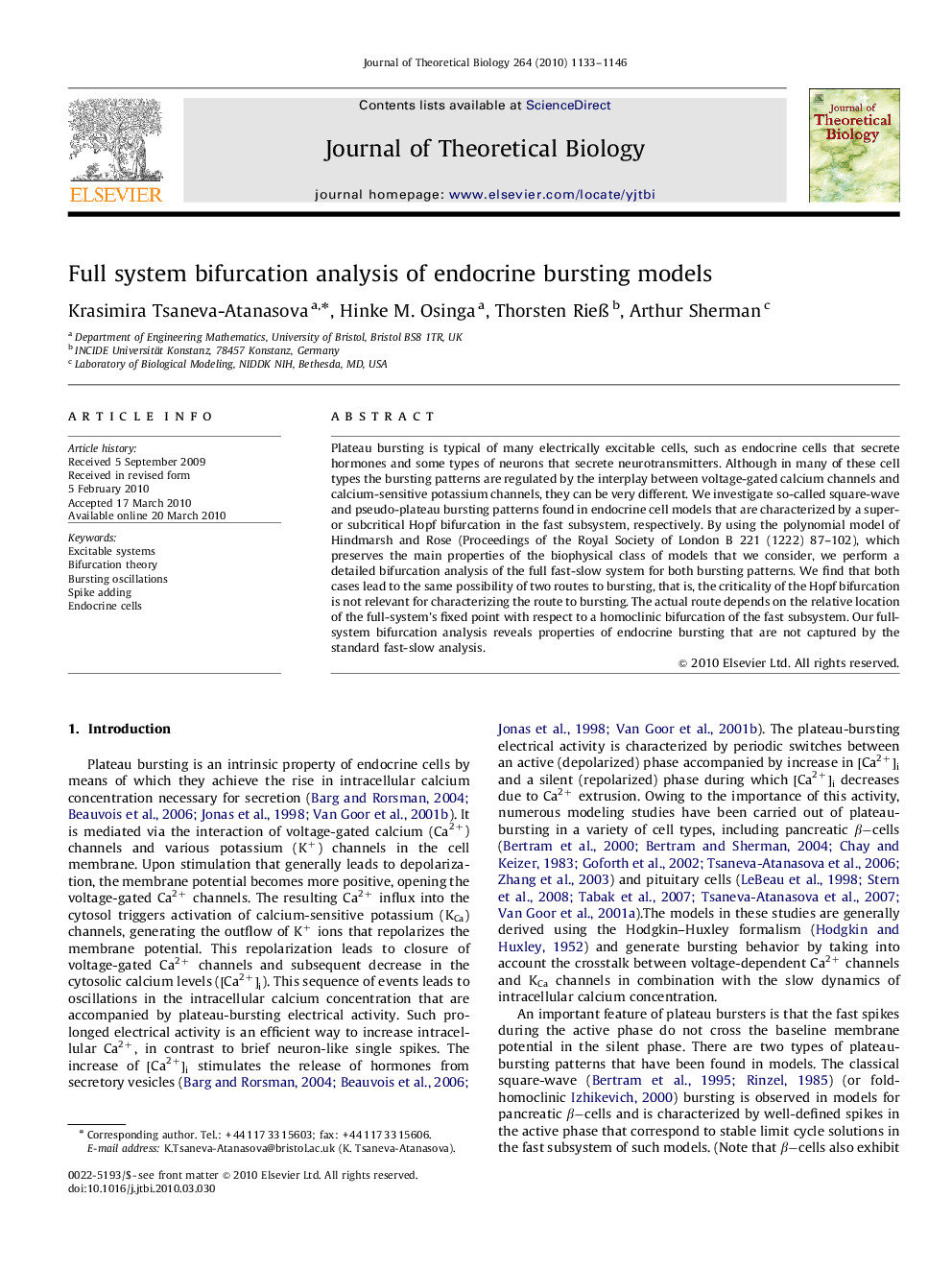| Article ID | Journal | Published Year | Pages | File Type |
|---|---|---|---|---|
| 4497554 | Journal of Theoretical Biology | 2010 | 14 Pages |
Plateau bursting is typical of many electrically excitable cells, such as endocrine cells that secrete hormones and some types of neurons that secrete neurotransmitters. Although in many of these cell types the bursting patterns are regulated by the interplay between voltage-gated calcium channels and calcium-sensitive potassium channels, they can be very different. We investigate so-called square-wave and pseudo-plateau bursting patterns found in endocrine cell models that are characterized by a super- or subcritical Hopf bifurcation in the fast subsystem, respectively. By using the polynomial model of Hindmarsh and Rose (Proceedings of the Royal Society of London B 221 (1222) 87–102), which preserves the main properties of the biophysical class of models that we consider, we perform a detailed bifurcation analysis of the full fast-slow system for both bursting patterns. We find that both cases lead to the same possibility of two routes to bursting, that is, the criticality of the Hopf bifurcation is not relevant for characterizing the route to bursting. The actual route depends on the relative location of the full-system's fixed point with respect to a homoclinic bifurcation of the fast subsystem. Our full-system bifurcation analysis reveals properties of endocrine bursting that are not captured by the standard fast-slow analysis.
